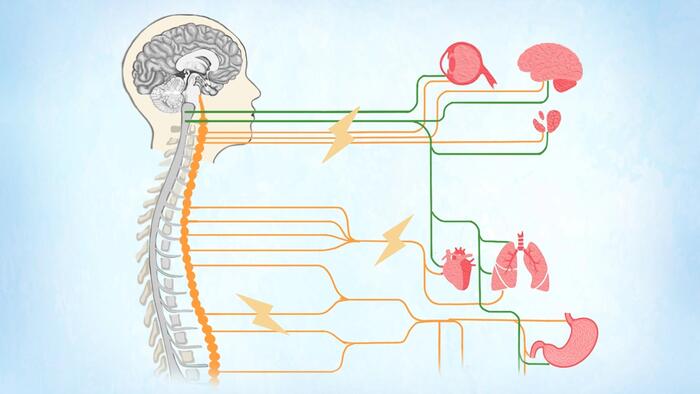


Authored by Mercura Wang via The Epoch Times,
Dysautonomia, also known as autonomic nervous system disorders, refers to a group of medical conditions causing dysfunction of the autonomic nervous system (ANS), which controls essential bodily functions such as heart rate, blood pressure, digestion, and temperature regulation. Individuals with these disorders struggle to maintain normal regulation of one or more of these systems.
More than 70 million people worldwide are affected by different types of dysautonomia.
The ANS is a part of the peripheral nervous system that controls involuntary bodily functions, such as heart rate, blood pressure, digestion, respiration, and body temperature regulation. It consists of two main branches: the sympathetic nervous system and the parasympathetic nervous system.
The sympathetic nervous system is responsible for the “fight-or-flight” response by increasing heart rate, blood pressure, and energy expenditure during stress or danger.
The parasympathetic nervous system is responsible for “rest-and-digest” functions by promoting relaxation, slowing the heart rate, and aiding digestion and energy conservation.
The ANS helps maintain balance (homeostasis) in the body by automatically adjusting these functions according to internal and external conditions. Dysautonomia occurs when the ANS malfunctions, causing the systems to fail to regulate the aforementioned processes properly, thus leading to various symptoms and signs.
Dysautonomia symptoms and signs can be acute and reversible or chronic and progressive. Common symptoms include those listed below.
Orthostatic Hypotension
Orthostatic (upright posture) hypotension is the most prominent symptom of dysautonomia. It results from a sudden decrease in brain blood supply when moving from a seated or supine position to standing, leading to the following symptoms:
Urinary Dysfunction
Sexual Dysfunction
Gastrointestinal Problems
Cardiovascular Issues
Neurological Problems
Other Symptoms and Signs
Dysautonomia falls into two categories: primary and secondary. Primary dysautonomias result from genetic or degenerative diseases affecting the brain and nervous system, while secondary dysautonomias arise from injuries or other underlying conditions. The latter may be linked to medications (e.g., first-generation antipsychotics), brain trauma, or conditions such as diabetes, sarcoidosis, and certain autoimmune diseases (e.g., rheumatoid arthritis, lupus, and Sjögren’s syndrome).
Idiopathic dysautonomias are autonomic nervous system disorders with an unknown underlying cause.
Environmental factors such as medical conditions, vaccinations, and medications can cause secondary dysautonomia. Some of these include:
Currently, there are at least 15 known types of dysautonomia. One individual may experience multiple types, with overlapping symptoms across them.
Ten of the more prevalent types include:
The following factors put a person more at risk of certain types of dysautonomia:
Read the rest here...

